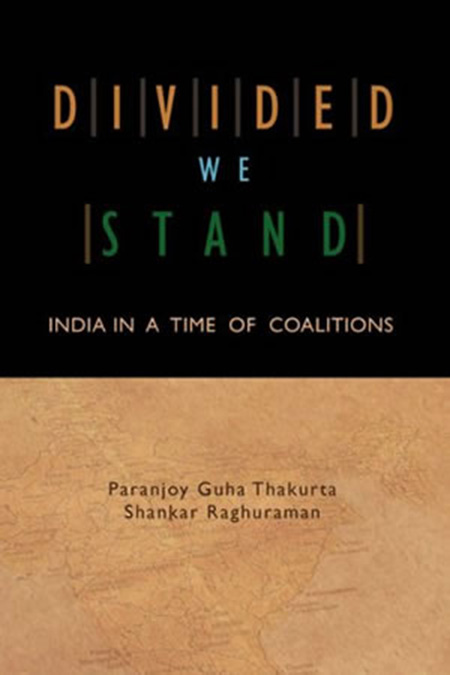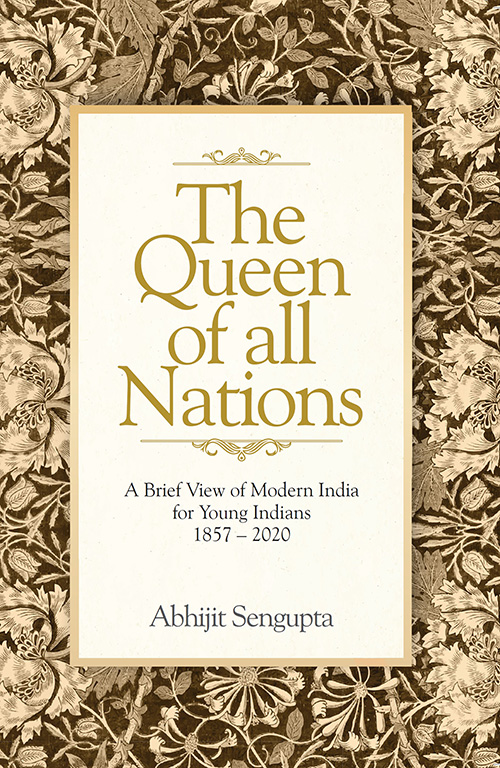Title: India Is Broken—And why it’s hard to fix: A People Betrayed, 1947 to Today
Author: Ashoka Mody
Publisher: Juggernaut
Pages: 512
Price: ₹899
For an academic and international civil servant to write a magnum opus that takes a broad sweep of India’s contemporary history and political economy, in a language that is understandable to the lay reader, is not an easy endeavour.
When Professor Ashoka Mody was asked by an interviewer why he published his book at this juncture, nearly nine years into the term of Narendra Modi, he said the book was in the making for a few years − that, in fact, it was waiting to be written for much of the 67 years of the author’s adult life.
Mody studied electronics at Indian Institute of Technology Madras and went on to become a researcher at the Centre for Development Studies at Thiruvananthapuram. He obtained a PhD in economics from Boston University. These facts are omitted from the one-paragraph “note” on the author at the end of the book, which runs to over 500 pages, including detailed notes and an index.
The short biographical profile mentions that the author worked several decades with the World Bank and the International Monetary Fund. This background is reflected in the frequency with which he quotes reports and documents of the two financial institutions; all citations not necessarily approving. Nevertheless, that the views of Mody, a Charles and Marie Robertson Visiting Professor in International Economic Policy at the School of Public and International Affairs at the University of Princeton in the United States, have been influenced by the two organisations is apparent.
Presumably, Mody’s base in the US has also made him use relatively more Western sources and writers in English to formulate and bolster his arguments: these include publications such as The New York Times and Financial Times to which he has contributed articles; and authors such as Salman Rushdie, Amitav Ghosh, Pankaj Mishra and Snigdha Poonam, to name a few.
Mody ventures into the lives of ordinary Indians through some of these writers and explores a short story by Munshi Premchand through the writing of noted anthropologist Veena Das.
Connecting dots
The author also frequently refers to well-known Indian films made over the decades − Raj Kapoor’s Shree 420 (1955), Satyajit Ray’s Pratidwandi (1970) and Ram Gopal Varma’s Satya (1998), and the “angry young” heroes depicted in popular Bollywood cinema − to highlight and reflect on different facets of India’s society as these have evolved since the 1940s.
He takes chronological leaps across time to make his points about the state of the nation, from the circumstances that led to model Jessica Lal’s murder to the life and times of businessman Dhirubhai Ambani.
These ambitious attempts to connect the dots through a smorgasbord, or should one say potpourri, of anecdotes and ideas are sought to be brought together through a few overarching themes that pervade the book, the three most important among them being employment, unemployment and under-employment.
Almost every chapter seeks to drive home the contention that there has been utter failure on the part of successive leaders of the country to create decent jobs for a very substantial section of the people.
There are dozens of charts and graphs that illustrate India’s terrible record in this regard and a number of comparisons are drawn with other countries, notably in Asia, which have been far more successful in providing employment to their citizens.
Corruption INC.
Another theme that dominates the book’s narrative is corruption in public life. Mody is relentless in his criticism of India’s leadership cutting across political parties. Our first Prime Minister, the “idealistic” Jawaharlal Nehru, over-emphasised heavy industry and centralised planning, under-emphasised agriculture and the creation of employment opportunities; he sparred too much with his “practical” Home Minister Vallabhbhai Patel.
But Mody is equally devastating in taking down Narendra Modi. Here are the titles of three chapters that come towards the end of the book: “Modi pushes the economy off the edge”, “Modi breaks India’s fractured democracy”, and “COVID-19 bares the moral decay”.
A queue outside an ATM in Gurgaon on November 20, 2016. Such queues were a common sight following the demonetisation move, which has been criticised in Ashoka Mody’s book as having pushed the economy off the brink.
The first refers to demonetisation and the hurriedly implemented goods and services tax (GST); the second elaborates on the rise of right-wing Hindu majoritarianism; while the third dwells on the devastating impact of the harshly imposed lockdown in 2020 that led to an unprecedented reverse migration from urban to rural areas for the first time in Indian history.
Earlier in the book, the author is also critical about Indira Gandhi’s authoritarian tenure as Prime Minister during the Emergency and her blind faith in her younger son, Sanjay. Mody also strongly argues how, during Rajiv Gandhi’s term, the forces of Hindu nationalism were unleashed with the force of a gale after the government of the day overturned the Supreme Court judgment on Shah Bano and opened the locks of the Babri Masjid in Faizabad, Uttar Pradesh.
Rao + Manmohan
The author spares almost nobody responsible for economic policymaking in the country and is even-handed in his condemnation of those who failed to design economic policies that would result in India producing goods of mass consumption through labour-intensive methods of manufacturing.
It takes some effort to find in the book a few silver linings among the dark clouds of pessimism about India’s future in the comity of nations. Besides Sardar Patel, Mody is all praise for the brief term of Lal Bahadur Shastri who, among other things, sought to stress the importance of improving agricultural techniques and farm productivity.
The writer also finds the period when P.V. Narasimha Rao was Prime Minister and Manmohan Singh Finance Minister an “all-too-brief” phase of “sanity” − a contention that can be challenged or even contradicted by using Mody’s own yardsticks of evaluating what can be construed as positive economic and social development. These are not rate of growth of gross domestic product (GDP) or the need for a “strong” leader to keep the country united.
The yardstick for evaluating development, the author emphasises, is the ability of governments to improve public healthcare facilities; step up job creation; develop cities as urban agglomerations with clean air and water; ensure that economic growth is ecologically sustainable; and, last but not the least, make strenuous and concerted attempts to bring down the incidence of widespread corruption in the administration, election processes, and political funding. No one can or should quibble with these undoubtedly laudable goals.
Given Mody’s trenchant criticism of the leaders of the Congress party, it is hardly surprising that two well-known persons who have commented in the opening section of the book are guarded in their evaluation of the volume while simultaneously complimenting the author in fulsome language.
The former Governor of the Reserve Bank of India Raghuram Rajan has written that the book is “a readable, comprehensive, though depressing history of what has gone wrong with the Indian economy” and a “devastating take-no-prisoners indictment of the policies of successive governments”. He adds: “While you may not agree with the relentless criticism and while the book is light on prescriptions, it is a must read for anyone who wants to understand India’s challenges today and their roots in the past.”
Congress MP Shashi Tharoor, after praising the book’s rich research and readability, confesses that he cannot “endorse everything that he [Mody] writes”.
A “centrist”?
The author’s personal political and economic ideology is not clear from the book. Even as he explains and analyses India’s political economy with competence and clarity, he steers clear of taking positions that may be considered “doctrinaire” and would perhaps prefer to be described as a “centrist” of sorts. As the blurb on the back cover summarises, while India had uneven but measurable success in the first half-century after Independence and dire poverty declined from the mid-1980s, “inspiring declarations of victory,” the pathetic provision of public goods, “education, health, cities, air and water, and the judiciary”, made the problems of the country “hard to fix”. Yet again, nobody can deny that India’s problems defy easy solutions.
After the unrelenting descriptions of all that has gone horribly wrong in the “world’s largest democracy”, the epilogue of the book correctly points out: “Good jobs are also the point of contact between economics and the politics of social discontent.”
Mody convincingly argues that “switching off democracy” and relying on autocratic leaders like Indira Gandhi and Narendra Modi “exhibited the cruelty and violence that typically accompanies strength”. How can the already tattered and torn moral and social fabric of India be repaired? The writer’s views about the country’s future are unrelentingly bleak.
In conclusion, a small crib. This reviewer noticed a glaring error of fact, which one hopes was merely a typographical one. On page 29 of the book, the date of Mahatma Gandhi’s assassination is mentioned as January 31 (not 30), 1948.
For the rest, read the book even if you disagree with the author’s views.


